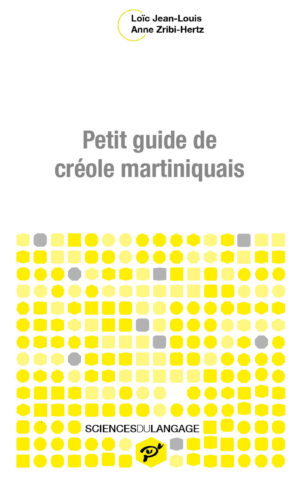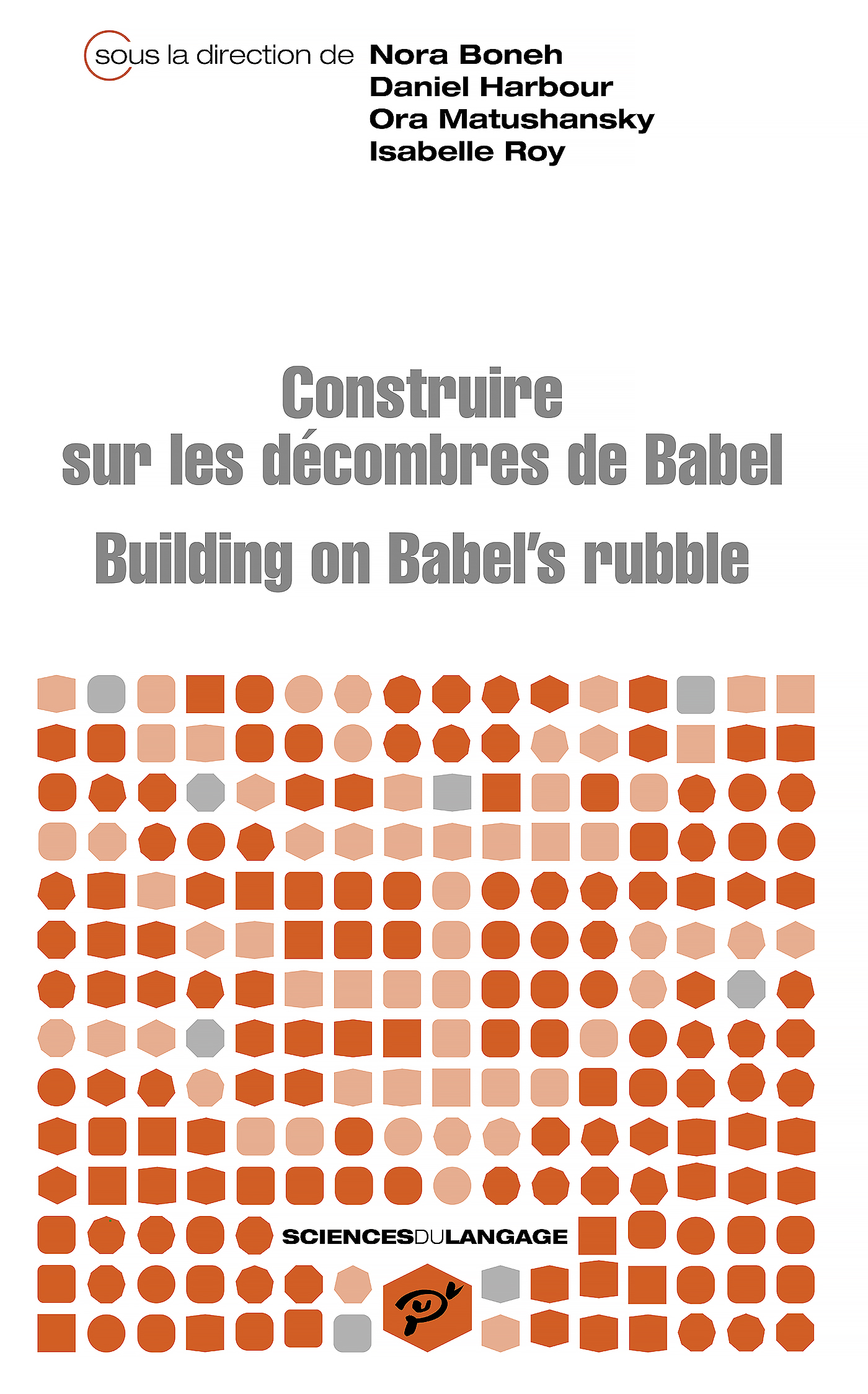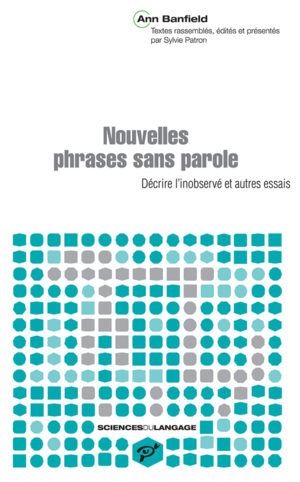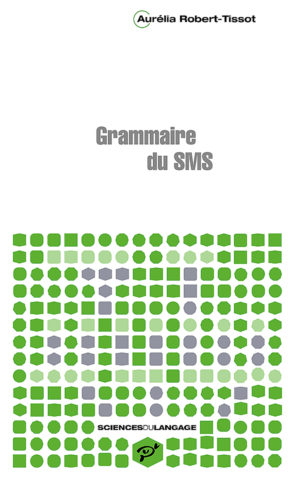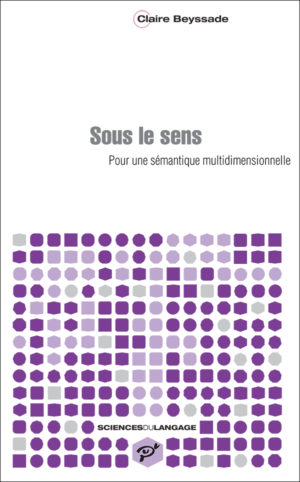An Introduction
C’est pourquoi on l’appela du nom de Babel, car c’est là que l’Éternel confondit le langage de toute la terre, et c’est de là que l’Éternel les dispersa sur la face de toute la terre. (Genèse 11 : 9)
Therefore is the name of it called Babel; because the Lord did there confound the language of all the earth: and from thence did the Lord scatter them abroad upon the face of all the earth. (Genesis 11:9)
ამისთჳს ეწოდა სახელი მისი, შერევნა. რამეთუ მუნ შეურინვა უფალმან ბაგენი ყოვლისა ქუეყანისანი, და მუნით განთესნა იგინი უფალმან, პირსა ზედა ყოვლისა ქუჱყანისასა. (დაბადება 11:9)
Вот почему он был назван Вавилон – ведь Господь смешал там язык всего мира. Оттуда Господь рассеял их по лицу всей земли. (Бытие 11:9)
Babel’s rubble—in the imaginations of the Old Testament authors—is a shattered ideal, a universal language that offered strength but invited hubris and endangered the Divine. God sought refuge in division, says Genesis. Yet, says Generativism, the universality of human language lives on. Mutual unintelligibility may seem ‘confused,’ as per Genesis’ pun balal on the name Babel, but the rubble that looks confused to human eyes perfectly obeys the deeper laws of the universe. The Generative program is based on the insight that human language too is answerable to higher powers than mere accidents of history and traditions of use (e.g., Chomsky 2005; Berwick & Chomsky 2016; see Newmeyer 1996 for earlier references). It is structured by the substance of human cognition. All tongues are hewn from the same stone. To its inhabitants, Babylon was bab-ilim ‘God’s gateway.’ To Generativists, the rubble of Babel is the gateway to understanding that most curious of objects: ourselves.
Formal linguistics has been quick to uncover systematicity in diversity. However, early in the enterprise, ergative languages mounted a clear challenge to ideas about hierarchical structure and mechanisms that build it (e.g., Dixon 1979; Harris 1981; Johns 1992; see Deal 2015 for a survey). Ergativity has brought scrutiny to bear on the generality of case assignment (e.g., Marantz 1991; Legate 2008; Baker & Vinokurova 2010; Baker & Bobaljik 2017), the universality of the subject-object asymmetry (e.g., Marantz 1989; Nash 1995, 2002) and the invariability of agreement mechanisms (e.g., Béjar & Rezac 2009; Polinsky & Preminger 2019).
The study of ergative languages was one strand of research into language diversity that greatly advanced understanding of structure building and of the syntactic interfaces with lexical semantics (e.g., Massam 1985 et seq.; Polinsky & Preminger 2019) and morphology (e.g., Halle & Marantz 1993).
It is in this context that Léa Nash, celebrated in this volume, first made her impact in the world of linguistics. The current volume—a 21-chapter salute—pays tribute to Nash’s prolific contributions then and since. The papers offer both theoretical and empirical research into languages ‘scattered … upon the face of the earth’: Albanian, English, French, Georgian (both standard and dialectal), Georgian Sign Language (GESL), German, Hebrew, Icelandic, Italian, Iwaidja, Kiowa, Mandarin, Megrelian, Nyangumarta, Panyjima, Romanian, Russian, South Italo-Romance dialects, Spanish, and Svan.
The volume comprises three parts, Words, Phrases, and Sentences, which offer a rich dialogue with Nash’s multi-layered research. Reflecting her contributions to the theory of argument structure, there is strong representation of diathetic alternations, the syntax of causatives, and the typology of core and noncore dative marking. Other papers branch out in multiple directions, as Nash’s own research has done, including the morphosyntax of Georgian and its relatives, the syntax of the CP layer and of locative expressions, and issues of categorization, derivation, and Generative theory in general. The brief summary of the chapters that follows will orient the reader not just within this volume but within the wide-ranging rubble rousing that constitutes Nash’s personal linguistic enterprise.
Words, the first part of the volume, focuses on diverse morpheme-related phenomena. David Erschler describes negation and negative-scoped indefinites in endangered Upper Bal Svan. The language deploys negative concord and negative polarity items in tandem and interpretation depends on pre- and postverbal positioning. Erschler proposes an analysis based on assimilation of negative concord to agreement. Relatedly, Tamar Makharoblidze describes negation in Georgian Sign Language (GESL) and its parallels with Georgian based on a corpus of three hours of recordings. Rusudan Gersamia addresses the intricate system of Megrelian verbal prefixes. Complex strings are subject to a fascinating array of morphophonological processes that make decomposition and glossing challenging. Using an electronic database of over 2600 sentences, the paper highlights the variety of difficulties that decomposition encounters as well as their diachronic sources and potential solutions. In a similar vein, Thomas Wier enriches the longstanding line of linguistic research into Georgian agreement by presenting historical and underappreciated dialectal data. Far from the templatic view at times encountered in descriptions of the language, Wier shows how increases and decreases in complexity often go hand in hand, creating conflicting patterns of morphological change.
Away from Kartvelian, Marie Laurence Knittel discusses French deverbal adjectives in -ant, offering an analysis that teases apart the contribution of the morpheme from those of its host. Xiaofang Zhou proposes a unified syntactic account of Mandarin axial complexes like zhuōzi-shàng ‘table-top/on’ and zhuōzi shàng-miàn ‘table up-face.’ Zhou hypothesises that these are nominal phrases with a complex internal constitution that accounts for their mixed distribution. Michela Russo describes how the mass/count distinction is encoded in the nominal determiner system in Southern Italo-Romance, tracing its diachronic development from Latin and its synchronic syntactic-phonological features.
Phrases, the second part of the volume, addresses the interface between the syntax and the lexical semantics of the extended verbal phrase. Patrick Caudal surveys the encoding of telicity in the causative alternation and avertive constructions of several Australian languages. These emerge as lexically deficient for telicity and aspectual features and so implement the connection between interpretation and structure in a novel way. María Cristina Cuervo and Jean-François Juneau tackle the double-duty preverbs mi- and mo- in Georgian ditransitives. These track person, not via agreement, but by virtue of being deictic elements. Cuervo and Juneau’s account combines person features with aspectual properties of constructions manifesting the preverbs. Carmen Dobrovie-Sorin and Patricia Cabredo-Hofherr tackle passives of unergative verbs in Germanic and Romance, tying them to ergative marking and the aorist of unergative verbs in Georgian. Analyzing both participial passives and se forms, they reach an analysis of passive that eschews Voice projections in favour of derivations from independently available components. Closely related to the topic of unergatives, Dalina Kallulli and Isabel Oltra-Massuet contrast cognate object constructions in Albanian with those of English and Spanish, addressing the thorny issue of how cognate objects should be defined.
Moving to causative constructions, Rita Manzini analyzes the syntactic properties of periphrastic causatives in Romance, suggesting that the embedding verb is not an auxiliary but a lexical verb that selects a vP. The size and type of the complement account for ergative alignment, supporting the view that ergatives are a passive-like, nonphasal vP. Martha McGinnis investigates Georgian causativized unaccusatives and transitives in nominalizations, passives, and (further) causativization. Their behavior favors the claim that configuration determines the identities of uncategorized functional heads. The basis for this view is laid out by Alec Marantz in his state-of-the-art survey of how word formation affects syntax. Marantz demonstrates how three decades of work by Nash and a recent upwelling of advances from New York University PhD students have led away from the head movement analyses he advocated 40 years ago towards a more abstract view of the syntax-semantics interface.
Finally, Sentences, the third part of this volume, addresses clause-level linguistic phenomena. Three of the chapters are concerned with dative constructions. Elitzur Bar-Asher Siegal maps out the presentative dative of Modern Hebrew, arguing that it is not to be subsumed under existing dative typologies. Instead, he expands the crosslinguistic classification of datives and proposes methods for its further rollout. Jim Wood and Einar Freyr Sigurðsson examine Icelandic applied datives with adjectival predicates. These mix properties of high and low applicatives and lead, like the previous study, to an expansion of the typology of dative constructions—and to the theoretical means of accounting for them. Beyond the verbal domain, Tatyana Bondarenko develops a dative dichotomy where some datives are specifiers of an applicative head, others part of a phrase headed by a null preposition. She demonstrates that again allows restitutive readings only in a prepositional structure that meets additional syntactic and semantic conditions.
The next two chapters address the theory of clausal architecture. Roberta D’Alessandro advances the hypothesis that resumptive strategies, such as Clitic Left Dislocation in Romance, serve to mark the crossing of spell-out domains. Examining Differential Object Marking in this light, she suggests that asymmetries in clitics doubling subjects and objects arise from the domains crossed. Carlo Cecchetto and Caterina Donati tackle unmotivated movement by framing successive cyclic movement and head movement as a natural class. They tie movement to labelling and visibility in line with the Phase Impenetrability Constraint, a position that calls for labels within the syntactic derivation (contra Chomsky 2013, 2019).
The final two chapters return to the riches unearthed in Babel’s rubble: similar constructions in distant languages. Daniel Harbour documents the curious use of plural agreement for singular whichever of, both within the clause where whichever occurs and in subsequent ones. The construction is identified in Georgian, Kiowa, and Quechua, with Kiowa data forming the focus of the chapter. The data are dissected and the likely elements of an analysis—unagreement, covert correlatives, the semantics of wh-modification—disaggregated. Chang Liu examines two types of ‘Presentational Amalgam Constructions’ in Mandarin and shows that an NP-ellipsis strategy proposed by Bhatt and Nash (2018) for Georgian correlatives can be implemented for one of the Mandarin constructions.
In all, these contributions reveal the multifaceted unity of the Generative Program in general and of Nash’s research in particular. We hope readers will be inspired to dig, sift, sort, and build further.
Tribute
We dedicate this volume to Léa Nash, in tribute to her many profound contributions to linguistics and its community of researchers. Léa is a theoretician who harnesses her exceptional mastery of languages from diverse families—Slavic, Semitic, Romance, and above all Kartvelian—to show how an explanatory theory of our knowledge of language can be constructed from the ‘rubble’ of Babel and the rugged riches it contains.
Léa’s expertise in the syntax of ergativity, focusing on Georgian and other Kartvelian languages (Laz, Megrelian, Svan), has singled her out in the linguistic world. Her work has challenged generalizations based on nominative-accusative languages while strengthening the framework from which they come. Her research covers a wide expanse of phenomena, spanning all levels of morphosyntactic analysis and traversing the interfaces between morphology, syntax, and lexical semantics. Her solo and collaborative work includes the distribution, derivation, and acquisition of clitics and pronouns, the syntax and semantics of unergatives, the nature of causative morphemes and the concept of direct causation, the typology of dative constructions and the theory of applicative heads, as well as complex predicates, correlatives, and relativization.
The contributions to this volume are all in different ways responses to her impact on the field and the lives of the linguists who inhabit it—for Léa’s contributions are not limited to her publications, rich as they are, but encompass her enormous intellectual and personal generosity. Léa is a linguist of connections, bringing not just ideas but people, places, and events together. The insights she offers, the introductions she makes, the networks she builds all are catalysts for others’ research and careers. One concrete example is the South Caucasian Chalk Circle, a series of conferences and summer schools, which Léa cofounded and coorganizes, bringing research communities in Georgia, Western Europe, and America together. Another, to which all the editors of this volume can personally testify, is Léa’s role as a teacher, advisor, and mentor. For us and many others, Léa has opened doors, given knowledge, provided skills, and offered advice at crucial crossroads in our careers and lives.
⁂
Léa, thank you, merci beaucoup, спасибо большое, დიდი მადლობა, and for being an inspiration in how to be linguistically and for holding so bright and kaleidoscopic a lantern to guide us on our ways.
⁂
Nora Boneh,
Daniel Harbour,
Ora Matushansky,
Isabelle Roy
Jerusalem, London, Paris, Nantes
January 2022
